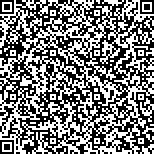|
| 引用本文: | 王超,申田田,陈邵柠,付婷,柳根,徐建锋,尹炜.基于降雨径流事件的小流域农业面源自动监测采样策略:微综述.湖泊科学,2025,37(2):354-367. DOI:10.18307/2025.0202 |
| Wang Chao,Shen Tiantian,Chen Shaoning,Fu Ting,Liu Gen,Xu Jianfeng,Yin Wei.Research progress on automatic monitoring and sampling strategies for agricultural non-point source in small watersheds based on rainfall runoff events: A mini-review. J. Lake Sci.2025,37(2):354-367. DOI:10.18307/2025.0202 |
|
| |
|
|
| 本文已被:浏览 1036次 下载 430次 |

码上扫一扫! |
|
|
| 基于降雨径流事件的小流域农业面源自动监测采样策略:微综述 |
|
王超1,2,申田田3,陈邵柠3,付婷1,2,柳根1,2,徐建锋1,2,尹炜4,5
|
|
1.长江水资源保护科学研究所,武汉 430051 ;2.长江水利委员会,湖库水源地面源污染生态调控重点实验室,武汉 430051 ;3.水环境污染监测先进技术与装备国家工程研究中心,长沙 410205 ;4.中国长江三峡集团有限公司,武汉 430014 ;5.长江经济带生态环境国家工程研究中心,武汉 430014
|
|
| 摘要: |
| 随着自动监测技术的快速发展,基于降雨径流事件开展农业面源监测成为可能。农业面源采样策略研究旨在通过合理设置采样时机和采样频率,提高径流事件的捕捉能力和效率。本文系统总结了农业面源输出特征和自动采样策略相关研究,结果表明:(1)小流域是农业面源输出的基本单元,污染物通常呈现出脉冲式输出特征;(2)基于降雨径流事件的农业面源自动采样策略包含基流采样频率、径流事件启动阈值、径流事件采样间隔、样品混合方式等基本要素,其中基流采样频率可通过概率统计公式计算,启动阈值多以实时监测的水位或者流量作为依据,采样间隔包括时间间隔(如15 min)和流量间隔(如5 mm)两种类型;(3)采样策略的负荷估算误差对启动阈值十分敏感,启动阈值设置不宜太高,流量间隔采样的负荷估算精度通常高于时间间隔采样,分散样模式的平均偏差低于混合样模式,混合样的平均偏差会随着混合数量的增加而扩大;(4)采样策略首先应考虑对径流事件的捕捉能力(如覆盖90%以上径流量)和污染负荷估算精度(与真实通量误差小于20%),监测目标、流域水文特征和生产生活因素等也需要综合考虑。当前,基于降雨径流事件的采样策略多以理想径流曲线为基础,对径流多峰、水质异步等复杂水文水质变化过程的应用可能具有一定的局限性,未来可在水质变化过程的精细化考虑、流域水文模型的深度耦合、环境要素信息的实时更新等方面对采样策略不断优化完善。 |
| 关键词: 降雨径流 农业面源 自动监测 采样策略 |
| DOI:10.18307/2025.0202 |
| 分类号: |
| 基金项目:国家自然科学基金项目(U2040210);湖北省自然科学基金项目(2022CFB342);南水北调中线水源有限责任公司科研专项项目(ZSY/YG-ZX(2023)022);中国南水北调集团科研专项项目(NSBDZX/SH/KY/2022-001)联合资助 |
|
| Research progress on automatic monitoring and sampling strategies for agricultural non-point source in small watersheds based on rainfall runoff events: A mini-review |
|
Wang Chao1,2,Shen Tiantian3,Chen Shaoning3,Fu Ting1,2,Liu Gen1,2,Xu Jianfeng1,2,Yin Wei4,5
|
|
1.Changjiang Water Resources Protection Institute, Wuhan 430051 , P.R.China ;2.Key Laboratory of Ecological Regulation of Non-point Source Pollution in Lake and Reservoir Water Sources, Wuhan 430051 , P.R.China ;3.National Engineering Research Center of Advanced Technology and Equipment for Water Environment Pollution Monitoring, Changsha 410205 , P.R.China ;4.China Three Gorges Corporation, Wuhan 430014 , P.R.China ;5.National Engineering Research Center of Eco-Environment in the Yangtze River Economic Belt, Wuhan 430014 , P.R.China
|
| Abstract: |
| With the rapid development of automatic monitoring technology, it has become possible to carry out agricultural non-point source monitoring based on rainfall runoff events. The research on agricultural non-point source sampling strategies aims to improve the capture ability and efficiency of runoff events by setting reasonable sampling timing and frequency. This article systematically summarizes the research on agricultural non-point source output characteristics and automatic sampling strategies, and the results showed that: (1) small watersheds are the basic units of agricultural non-point source output, and pollutants usually exhibit pulse output characteristics. (2) The agricultural non-point source automatic sampling strategy based on rainfall runoff events includes basic elements such as base flow sampling frequency, runoff event initiation threshold, runoff event sampling interval, and sample mixing method. The base flow sampling frequency can be calculated through probability statistical formulas, and the initiation threshold is mostly based on real-time monitoring of water level or flow rate, and the sampling interval includes two types: time-interval (such as 15 min) and flow-interval(such as 5 mm). (3) The load estimation error of the sampling strategy is very sensitive to the startup threshold, and the startup threshold should not be set too high. The load estimation accuracy of flow interval sampling is usually higher than that of time interval sampling. The average deviation of the dispersed sample mode is lower than that of the mixed sample mode, and the average deviation of the mixed sample will expand with the increase of mixing quantity. (4) The sampling strategy should first consider the ability to capture runoff events (such as covering more than 90% of runoff) and the accuracy of pollution load estimation (with an error of less than 20% from the true flux). Monitoring objectives, watershed hydrological characteristics, and production and living factors also need to be comprehensively considered. At present, sampling strategies based on rainfall runoff events are mostly based on ideal runoff curves, which may have certain limitations in the application of complex hydrological and water quality change processes such as multi peak runoff and asynchronous water quality. In the future, sampling strategies can be continuously optimized and improved in the refinement of water quality change processes, deep coupling of watershed hydrological models, and real-time updating of environmental element information. |
| Key words: Rainfall runoff agricultural non-point source automatic monitoring sampling strategies |
|
|
|
|